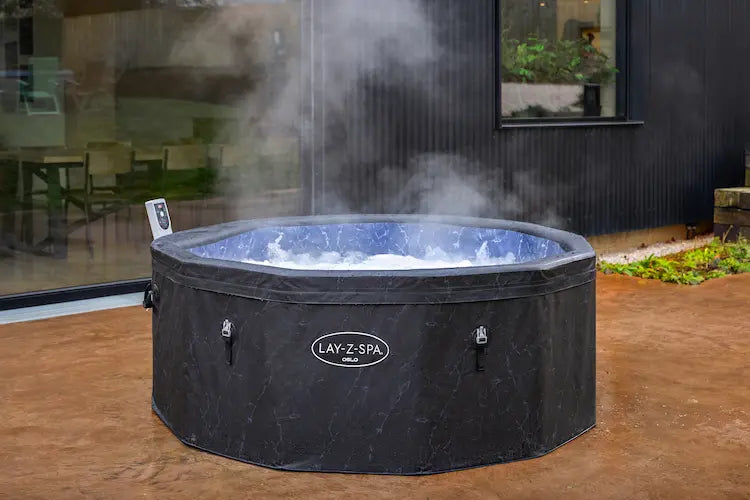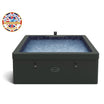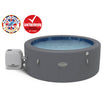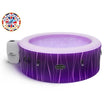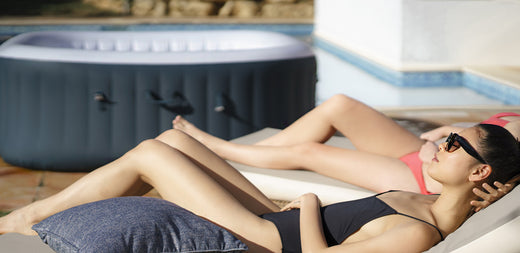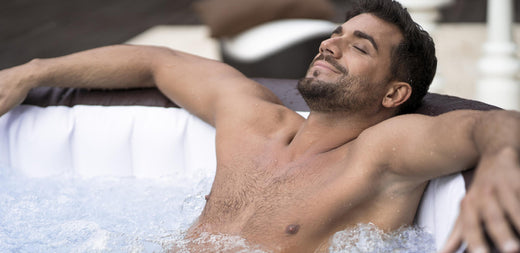Disclaimer: This article is inspired by the work and findings of Charles Steward of Coventry University as outlined in The Conversation.
Did you know that you can achieve similar results from using a hot tub as going for a run or cycling?
Throughout human history, many cultures around the world have used heat therapy to improve health. It is only recently that science has begun to examine and understand the benefits of passive heating as opposed to getting hot and sweaty from exercise. There have now been many studies* on the effects of hot baths or warm water immersion in 40°C water, like a hot tub, versus cycling, running, and other forms of exercise.
Internationally renowned UK-based sports specialist institution, Loughborough University, claims that "soaking in a hot bath and relaxing may be as beneficial for your health as a 30-minute walk."

Scientific Evidence of Hot Tub Health Benefits
The combination of multiple studies and research findings indicates that passive heating, such as using a hot tub, can offer health benefits comparable to that of low to moderate intensity physical exercises, such as walking, jogging, and cycling.
Improvements and health benefits include:
- Cardiovascular health & function (general fitness and reducing the risk of cardiovascular disease)
- Increased blood circulation
- Lower blood pressure
- Improved blood sugar control
- Reduced chronic inflammation (present with long-term diseases, such as type 2 diabetes)

How Does It Work?
When body temperature rises it finds a way to lose heat to regulate itself. The main way it does this is by widening the arteries and increasing the blood flow to the skin. Elevation in blood flow promotes the production of a variety of molecules in the blood that help with cell growth, repair and protection of blood vessels. Using a hot tub also has the benefit of hydrostatic pressure (the pressure of the water on your body), which assists in the return of blood to the heart.

When To Use a Hot Tub Instead of Exercise?
If you are physically able, exercise should not be substituted and using a hot tub should complement physical exercise. With busy lives and busy schedules, it isn’t always possible to allocate time for physical exercise or find the motivation so time in the hot tub is a great way to give you a quick boost.
For anyone who is physically unable to perform exercise or displays poor exercise adherence, using a hot tub now has proven health benefits. This is particularly true of anyone with disabilities and the elderly and this is where the benefits of using a hot tub are particularly significant.

Hot Tub Wellbeing Benefits for Everyone
For whatever reason you are using your hot tub, there are plenty of wellbeing benefits you will be experiencing. This includes boosting your immune system, relieving stress & anxiety, helping you sleep better, detoxing through raised body temperature.
Please note that using a hot tub for a long period of time could result in dizziness, unbalance or feeling faint, especially when standing up. Make sure you drink plenty of water and always consult a medical professional before using a hot tub for health reasons.
*Study Sources:
Passive heat therapy improves cutaneous microvascular function in sedentary humans via improved nitric oxide-dependent
Substantive hemodynamic and thermal strain upon completing lower-limb hot-water immersion; comparisons with treadmill running
Habitual tub bathing and risks of incident coronary heart disease and stroke
Effect of heat stress on vascular outcomes in humans



